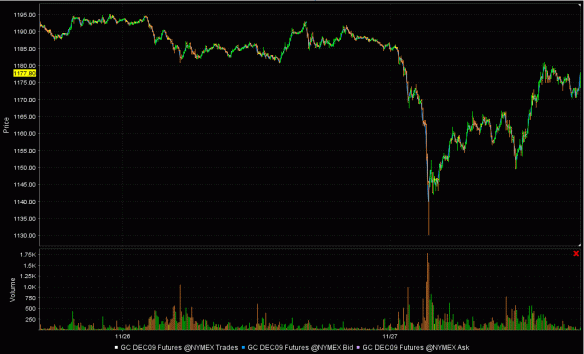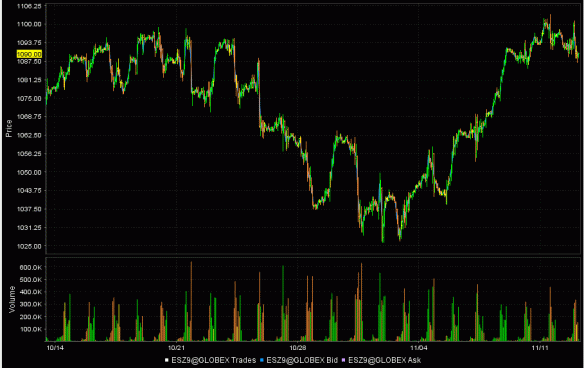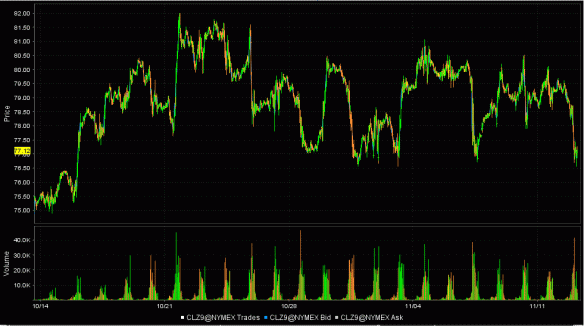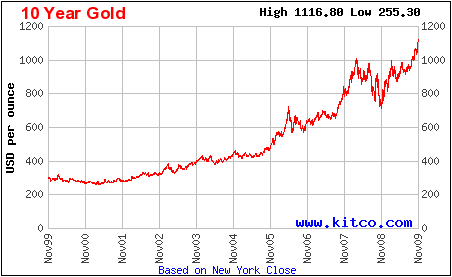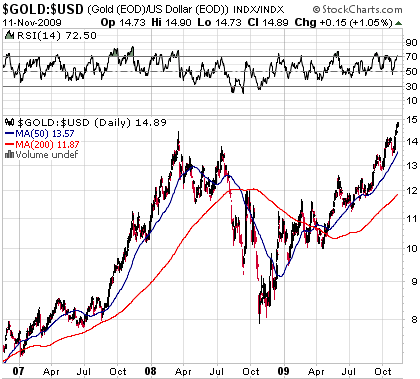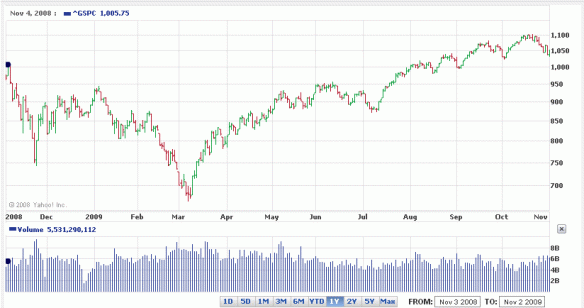While Americans were on holiday, the last couple of days have seen some exciting market action. Stock indexes around the world declined roughly 3-8%, “safe” US and German government bonds rallied, and the dollar plunged to a new low then rebounded very strongly. Gold made a new all-time dollar high at $1196 as the dollar made its low, but when the buck turned yesterday gold plunged to $1130 as US stocks futures (which traded round-the-clock through the holiday) wiped out two weeks of gains in about 24 hours. Higher yield currencies such as the Aussie, Kiwi and South African Rand fell 3-4%, oil extended its decline to under $75, and copper got smacked $0.20 off its new high. One spot of green was natural gas, which extended its bounce to 14% off an area of strong technical support.
Gold showed us what can happen to a levered market after a parabolic move breaks its uptrend. In the wee hours today, it fell $55 in just two hours before rebounding right to resistance (the previous support at $1180, which when broken, precipitated the crash). Here’s a chart of the last two days:
-
Commentators blame the Dubai default for this week’s gut-check, and the event may have acted as a catalyst, but the fact is that the risk/reflation trade had reached new heights over the last couple of weeks on a wave of complacency. Early this week the VIX nearly hit the teens and the daily put:call ratio put in a super-low print, while the Nikkei, Treasuries and yen offered warnings that all was not well. Browsing through the world index charts on Bloomberg, it is striking how few other markets have followed the Dow to new highs this month. The troops have been losing heart since summer as the generals kept charging ahead, a classic case of inter-market non-confirmation, which can also be seen in the weak action in small-caps and sector indexes like the transports, financials and utilities.
In last few trading hours of the week (this morning), many markets staged a very sharp recovery, as you can see here in this 1-month view of S&P futures:
Source: Interactive Brokers
Today’s pattern played out in nearly identical fashion in oil, gold, silver and other stock indexes. The stall point offered a clean spot for initiating or adding shorts, and those who did so were rewarded nicely in the last 30 minutes of trading as everything sold off quickly.
Next week should be very interesting. The risk trade plateaued for the last two weeks and went through the usual distributive action, so I have been expecting a down leg of some magnitude. Wouldn’t it be nice if this were the one to finally put a nail in the reflation coffin? I am sick of this market, as would be anyone who understands how far out of line these prices are with value or economic reality.
As Dubai’s default reminds us, this credit bust is far from over. There are still trillions and trillions in bad debt out there, and nearly every major bank in the world is still bankrupt and contracting lending (down another 3% in the US in Q3). We have all the hotels, condos and strip malls we’ll need for ages, and the consumer culture of the late 20th and early 21st century is just an unfortunate historical blip. Don’t tell that to Wall Street equity analysts, though — they still think the S&P will earn over $60 next year, just like in boom-time 2005.
–
PS — check out Dave Rosenberg’s latest essay for a good commentary on the week’s action. You have to sign up, but it’s free. Click here.

